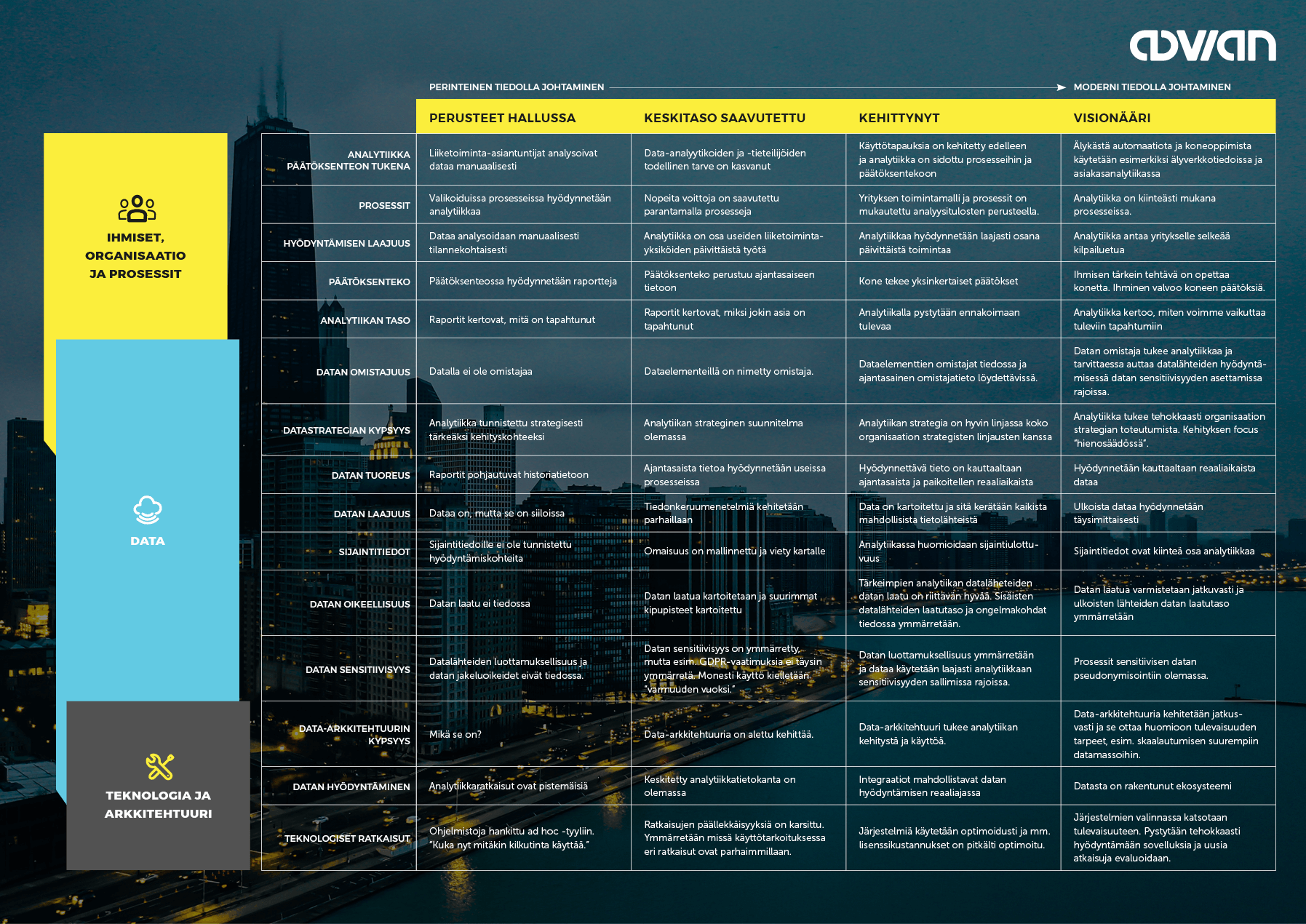Quality management systems was a hot topic in software development back in 1990s. Typically a company hired a quality manager, that person in an expensive suit, who interviewed the development managers and started writing a quality guide.
The document included things like quality gates, review practices, testing practices and general quality guidelines. This quality guide was published ceremoniously and titled something like “The Official Company Quality Guide v1.0, 1995.”
A company could even get a certificate for its excellent quality and the quality manager got a raise. But the quality guide was already on its way to oblivion. The quality guide consisting of several heavy binders typically ended up collecting dust on the shelf.
A year or two later some young ambitious project manager asked: “should we take a look into our quality system?” Some of the more senior developers usually answered:”nah, let’s just keep on coding.”
Data governance in practice
DAMA international specifies Data Governance as “the exercise of authority and control (planning, monitoring, and enforcement) over the management of data assets.” It is a set of practices and guidelines, from strategic to operative level, for governing data. In other words, ensuring that information management happens in the right way.
Physical binders are (thank God) history, but there is a dire risk that your comprehensive yet detailed data governance model experiences the fate of archaic quality management systems. The data governance pages end up collecting virtual dust: that place in Confluence, where you could confess a murder and never get caught.

What then does data governance mean in practice? How does it differ from data management? As an example, in the simplest possible terms, let’s assume there is a serious data quality issue in the company’s database.
Luckily, the company is quite savvy in information management. The error is quickly detected by data quality controls monitored by Jane the Data Steward, fixed, and the documentation is updated accordingly. That’s Information Management.
Eventually Jane leaves the company, and John the New Data Steward starts to learn the ropes. Unfortunately, John doesn’t have as much experience as Jane, and he has no way of knowing all the silent details of the data that Jane had collected during her ten years in the job.
Most of all John doesn’t know all the things Jane did outside her official job description, what really were all her responsibilities, whom to ask help, how to escalate issues, who must be informed about data changes etc. These things were just never documented, because Jane knew them all instinctively. What John needs are clear guidelines and directions for his work. That’s Data Governance.
Unless John gets a lot of support from Jane’s former colleagues and is a quick learner, there will first be a big commotion and soon the quality of data will steadily start to deteriorate. Eventually the bad data quality will affect the quality of the customer service, the company’s reputation and its annual results.
Well, isn’t it relatively easy to fix this problem, you may ask. Technically, yes. We can document all the data-related work processes, clarify roles and responsibilities, make better guidelines, arrange training and so on. We can involve stakeholders and surely we will get support from the management. We can even arrange a kick-off and print funny T-shirts for the Data Governance team.
This can’t fail, can it?
After one or two years the quality of data is still deteriorating. There was even a serious error in the company’s invoicing, and the defect affected several hundreds of customers. The root cause, it was finally concluded, was inconsistent data. Data governance confluence site was last updated a year ago. Hardly anybody has even opened it ever since.
What went wrong?
Simply put, there are two main reasons why Data Governance is difficult to implement. The first is that there’s a lot of work in it. Anybody who has started implementing Data Governance practices for a company, which doesn’t have any, can confirm this. Data is everywhere and (almost) everybody utilizes it, one way or another.
The second is people. Data Governance is not about code, documentation, presentations or process diagrams, it’s about people. This is the hardest part of it all. Anybody who has ever tried to change a company culture can confirm this. Changing the way people work, changing their routines, changing their attitudes towards certain tasks, that’s what really takes time.
Implementing Data Governance is really a cultural change. We don’t claim we have that silver bullet solution for changing the data culture of a company, we know it’s a long journey, but we are happy to share a few tips for implementing Data Governance in practice. Check the 10-step list of successfully implemented data governance below.
10 steps to implement Data Governance successfully in practice:
- Be visible
Probably the worst mistake is to keep the Data Governance documentation hidden because it is not “ready” to be published. It never is. Keep the documentation in a place accessible for everybody. Keep it clean and readable. Never mind if some parts are missing. - Communicate
Communicate frequently and systematically. Communication is a two-way street. Remember to listen, address people’s worries and give them something they find useful. People will adapt to new ways only if there’s something for them. This is a key to steer clear of the way to oblivion, described in the beginning of this story. - Keep it simple
Things tend to get complicated anyway. Don’t make them deliberately any more complicated than necessary. Data rectification processes don’t always need to be complex. The simpler, the better. - Make measurable KPIs
Set understandable and measurable key performance indicators for Data Governance. For example, you can monitor data issue resolution times and implement also some softer metrics, like a brief monthly questionnaire to all the Data Stewards to find out how confident they are. - Make responsibilities clear (RACI)
A good old-fashioned RACI-matrix (Responsible, Accountable, Consulted, Informed) works fine! Make sure the responsibilities of all the roles are clearly defined and, most importantly, understood. - Put the right people in the right places
This should be obvious. Not anybody can (or wants to) become a good data person. You can’t nominate just anybody a Data Steward or a Data Owner. Each role requires different qualities. - Arrange training
There are many things that can be learned, but people must be trained. It is a mistake to assume somebody can learn, say, SQL just like that, even though it may be as easy as riding a bicycle for you, or cross-country skiing for me. - Really allocate time
One of the most obvious mistakes is to assume people happily take additional work on top of their already crushing workload. They can’t do it. It must be accepted that a new Data Steward will spend a lion-share of her time on Data Steward’s work. She will have less time for other work. Data work must also be on people’s scorecards. If a Data Steward can leave the data work undone and get away with it, guess what kind of tasks will always get the lowest priority on her personal backlog? - Start from a small, manageable scope
As mentioned earlier, implementing Data Governance is a huge job. We recommend that you start from a small, manageable scope. Take one concrete problem, for instance. Solve it and build processes and practices around it to ensure that next time there are clear procedures to deal with similar issues. - Repeat, repeat, repeat
Changing the data culture is a change of the company culture. It doesn’t happen overnight. Educate, communicate, repeat.
Topics: Leadership, Consulting, External Data, Data governance












